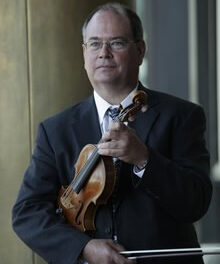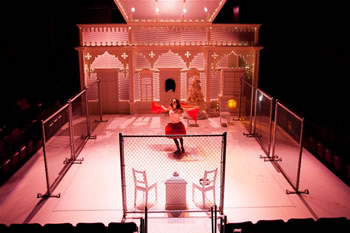Stephen Walsh: Debussy; A Painter in Sound, New York: Alfred A. Knopf, © 2018, Pp. x + 324, $28.95. It was released in the USA on 23 October; the UK edition was published by Faber and Faber with a different cover/jacket on 1 January, £20; 2018 marked the centenary of the composer’s death on March 25, 1918.
This is everything but your run-of-the-mill biography of a composer. Walsh tells us, but in his “Acknowledgements” at the end, not ‘up front’ (though my reading on the subject is extensive enough that I had quickly figured it out) that he is not building his narrative around a retelling of the known facts of Debussy’s life. It is, in reality, a biography crafted around the works, completed and planned, if not always seriously undertaken, and abandoned, with the life details, once we are beyond his adolescence, worked in around them.
Debussy was dramatically unlike most other composers, so this perspective and method is eminently appropriate. He entered the Paris Conservatoire at age 10 thinking he’d like to become a concert pianist, but within 3 years changed his career orientation to composition, because he seems to have had an innate sense that music needed to change its direction and expand its horizons, and that he might be the one to do that, and because, although he won some prizes in performance in his first years, he was not self-disciplined enough to pursue that path. This was a fault that followed him throughout most of his life, alas, because the number of works that we have to appreciate and enjoy today is severely limited as a result. He was also a perfectionist, and, while not really a fault, that also slowed him down and reduced the quantity of the products. His other major fault was amorous distractions. Walsh make no excuses for any of these.
He uses primary sources, quoting frequently from Debussy’s and others’ correspondences, carefully documented in the notes at the end of the book, to “get into the head and skin” of his subject, as well as into the music itself, and how its desired effects are achieved, and he succeeds extraordinarily well. His descriptions of the latter throughout offer details that should, in fact, be useful to performers who are contemplating rendering it. A lot of the music “[…] is bound up with the superb control of a very simple musical device, the arpeggiated (spread) chord in root position repeated many times, loud or soft, and with the sustaining pedal (never indicated by Debussy, who nearly always preferred to leave this matter to the player) ensuring maximum resonance.” (p. 79) Here is the primary source of the mist and mystery of much of his music that sets it apart from what went before:
- “[..] Debussy’s harmonic language has developed [by 1899, with his Nocturnes] to the point where chords no longer carry implications, but generate colours prismatically and in a series of fluctuating patterns. The beauty of this music lies not in dramatic development or in the strong contrasting of themes, but in the refined juxtaposition of colours, melodic, harmonic and instrumental. Debussy’s ear for chord voicing–the exact placing of each note in terms of register, balance sand timbre–was equaled in his lifetime only perhaps by Wagner, whose orchestration (in Parsifal) Debussy once memorably dismissed as ‘seeming to be lit from behind,’ though he had also on an earlier [sic] occasion dismissed Wagner’s scoring as a “kind of multi-coloured cement, almost uniformly spread, in which [M. Croche (Debussy’s pseudonym as a reviewer)] told me he could no longer distinguish the sound of a violin from that of a trombone.'” (p. 123; quote from a review in La Revue blanche, 1 July 1901)
Debussy was active at the time when Wagner and his music were all the rage, and he knew that music and style – he went to Bayreuth more than once, as well as to Paris performances of some of his works, but he did not accept that it should be the only acceptable one. He referred to Wagner’s leitmotifs as « cartes de visite » (p. 100). During WW I, he signed everything « musicien français » to make it clear that the Austro-German tradition was not the sole valid one. He was the heir of the tradition of the French clavecinistes of the 17th and 18th centuries (See my article about them.), a tradition older than Bach that Bach admired and even imitated. Debussy was also aware of the music of Palestrina and Monteverdi, who also preceded Bach. Walsh points all of this out, and that he admired the music of Chopin and its expressivity (and edited his Études [which inspired him to write his own] and some other works for the publisher Durand [also Debussy’s] during WW I, when the other editions were no longer obtainable), and that Debussy’s interest was in opposing dominance by any single tradition: he felt there was room for others, including non-Western ones, such as Oriental, including Indonesian gamelan, and non-contemporary ones, such as the Ancient Greek, for pentatonic scales and earlier modes. He was adamantly opposed to composition by rules and prescriptions, as was taught in the Conservatoire(s). “No less significant is the way he uses his harmonic language as part of an overarching design, while mostly avoiding its traditional, textbook procedures. His method actually varies from piece to piece.” (p. 128); performers beware, and prepare accordingly. The works are described in detail in these terms.
Walsh also connects Debussy to the literary and visual artists of his time. He knew them personally, and frequented their salons, especially that of Mallarmé on Tuesdays. The 1ère of his first major work, La Demoiselle élue, in 1893 “brought him to the attention of or into contact with important artists in other disciplines who sensed, what not every musician sensed, a new and sympathetic direction in this work so candidly linked to modern tendencies in painting and poetry.” (p. 92) Walsh also makes analogies between the characteristics of their works and those of Debussy’s, including specific works in both instances, that are excellently expressed and ‘spot on.’ He discusses La Mer in the context of “Impressionist sea paintings like Monet’s Storm, off the coast of Belle-Isle or Whistler’s Arrangement in Blue and Silver: The Great Sea,” for example (p. 163). Critics were divided on the success of this, but we tend to love it: one wrote: “I have the impression of being, not at all in front of nature, but in front of a reproduction of nature: a marvelously refined, ingenious and industrious reproduction […]” (p. 164). The Romantics sought to inspire the feeling of being in the presence of nature; “All one can say with confidence is that, like the Impressionist painters and the Symbolist poets (among others), Debussy achieved his greatest work by discarding traditional grammars and trusting his own formal and aesthetic instincts.” (p. 168)
The book reads easily and smoothly; it is in no way overwhelming. It took me about 4 days, not by any means entirely devoted to that activity, and is readily understandable by a music-lover with little expertise, even though I have more than the average music-lover. Walsh occasionally throws some attention-catching spices into the pot; his style is tinged with humor and wit, making it an enjoyable read: “[..] the music itself [of the Danses sacré et profane], however attractive, was hardly calculated to set the doves fluttering in the musical dovecots.” (p. 157); or, concerning Poissons d’or: “The smooth, rippling waters of the opening are soon invaded by all kinds of fishy activity: darting, plunging, ‘capricious and supple,’ almost as if the composer had sat down at the piano and improvised a variety of musical representations of the [Japanese lacquered] panel before his eyes.” (p. 186).
Through his careful research, Walsh explodes some myths and dispels some mists that earlier critics and reviewers have invented or perpetuated, most notably the story of the eternally puzzling title of the Prélude: La Terrasse des audiences du clair de lune, for which he finds and identifies once and for all the true source (pp. 233-35), that makes it completely logical and understandable. There are several other instances of this sort, but he “falls into the trap” of confusing the SMI and the SIM (in French, periods are not used in acronyms), listed in their chronological order: the former is the Société Musicale Indépendante, founded in Paris in 1909 by Gabriel Fauré, Charles Koechlin, Maurice Ravel, Florent Schmitt, and Émile Vuillermoz to promote French music, that organized concerts in which many new works, including several by those composers and of Debussy’s, were premièred; the latter, the Société Internationale de Musicologie, founded in Basel/Bâle in 1927 (nearly a decade after Debussy’s death), which did not organize concerts, but published, and still does, a major journal, and organizes conferences and symposiums (which may sometimes include concerts, but their purpose is entirely different). He is not alone is doing so; see my article about the “Mighty Five” French pianist-composers, that includes two of those founders and Debussy (The other two, Saint-Saëns and Chabrier, were both known and admired by Debussy, as Walsh affirms.) This is nonetheless a book that I unhesitatingly recommend enthusiastically.












